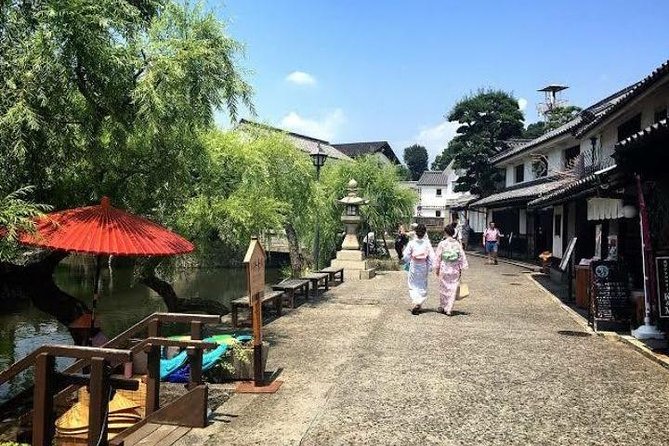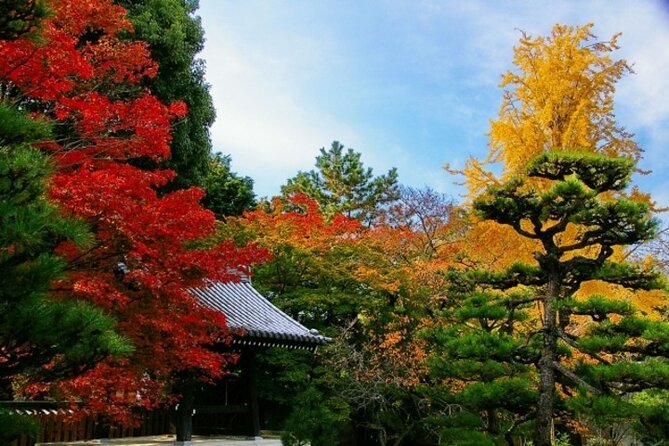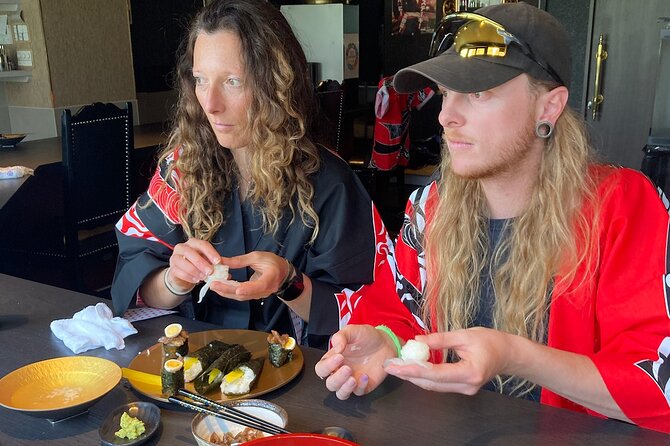In Japan, the art of Furoshiki cloth wrapping has been passed down through generations, with over 1,200 years of history shaping its elegance and practicality.
As travelers gather in the heart of Tokyo to partake in this cultural experience, they are met with a timeless tradition that goes beyond mere aesthetics.
The intricate folds and ties of Furoshiki hold secrets that connect the past with the present, offering a glimpse into a world where sustainability and sophistication intertwine seamlessly.
Just The Basics
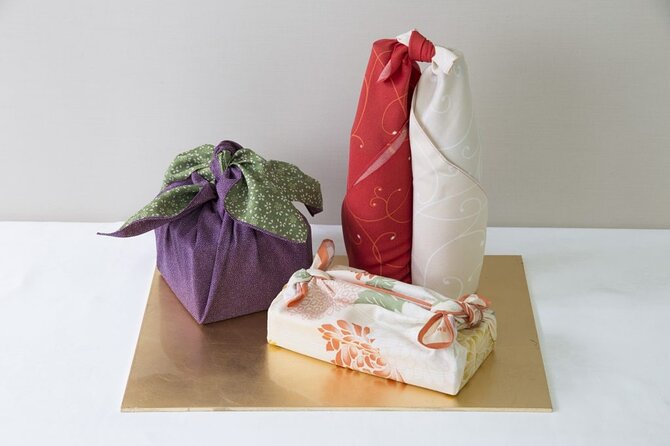
- Furoshiki wrapping embodies Japan’s heritage and eco-conscious values.
- Furoshiki offers a versatile and elegant way to wrap and carry items.
- Furoshiki promotes sustainability through reusable and biodegradable materials.
- Furoshiki techniques blend creativity with practicality for a unique wrapping experience.
Overview of Furoshiki Cloth Wrapping
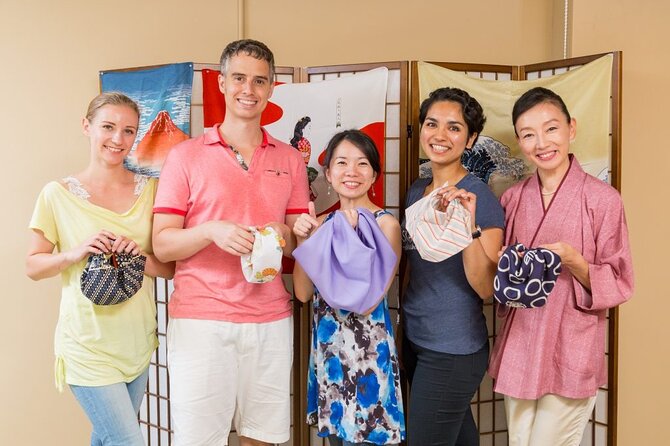
Furoshiki cloth wrapping is a versatile and eco-friendly Japanese traditional art that uses square pieces of fabric to wrap and carry items. This practice is deeply rooted in Japan’s cultural heritage, dating back centuries.
Furoshiki embodies the essence of environmental sustainability by promoting reusable and biodegradable materials, aligning with modern eco-conscious values. The art of furoshiki isn’t only practical but also holds symbolic significance in Japanese culture, reflecting the idea of respect for the environment and simplicity in daily life.
History and Significance of Furoshiki
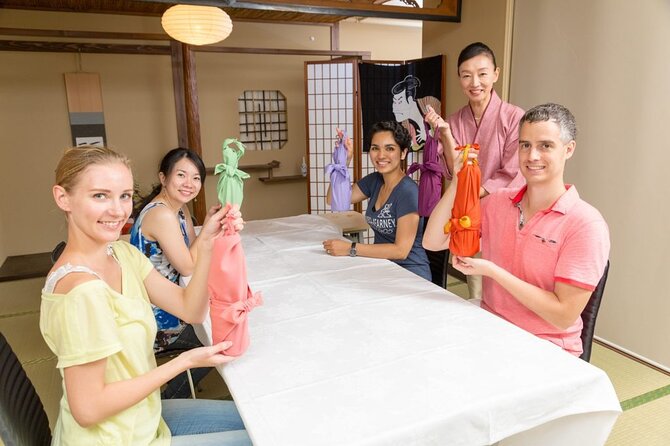
Originating during ancient times in Japan, the practice of cloth wrapping, known as furoshiki, carries with it a rich history and profound cultural significance. Furoshiki embodies Japanese cultural traditions by serving as a versatile cloth used for wrapping and carrying items, gifts, and even as a decorative accessory. This traditional method not only showcases the artistry and creativity of the Japanese people but also promotes environmental sustainability through its reusable nature, aligning with modern eco-friendly values. Furoshiki’s adaptability reflects a time-honored practice that has stood the test of time, blending heritage with practicality and elegance.
| Cultural Traditions | Environmental Sustainability | Practicality |
|---|---|---|
| Reflects Japanese heritage | Promotes reuse and reduces waste | Versatile and functional |
| Demonstrates artistry and creativity | Aligns with eco-friendly values | Offers a sustainable alternative |
| Carries historical significance | Reduces environmental impact | Easy to learn and use |
Materials Needed for Furoshiki Wrapping
When preparing for traditional furoshiki cloth wrapping, gather a selection of square-shaped fabrics in various sizes to suit different wrapping needs. These fabrics can range from lightweight cotton for small items to sturdier materials for larger objects.
Apart from the traditional silk or cotton cloths specifically designed for furoshiki, one can also explore using scarves, bandanas, or even repurposed fabrics like old bed sheets.
The creative uses of furoshiki wrapping are endless, from carrying groceries and wrapping gifts to creating stylish bags and even fashion accessories. Opting for furoshiki wrapping isn’t only aesthetically pleasing but also a sustainable alternative to disposable wrapping paper, promoting eco-friendly practices and reducing waste.
Step-by-Step Guide to Furoshiki Wrapping
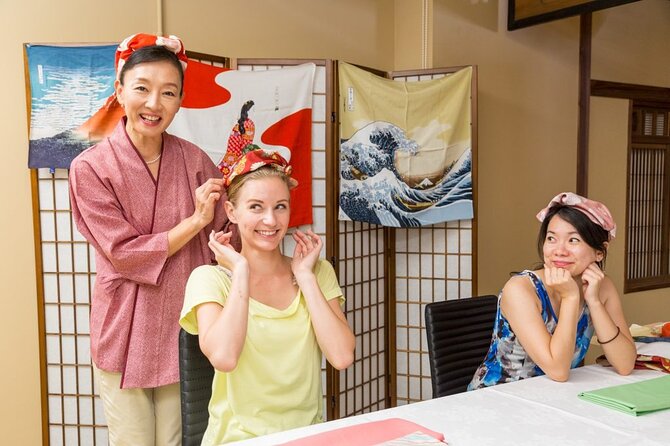
To master the art of traditional furoshiki cloth wrapping, one must first understand the fundamental steps involved in this unique and versatile technique. Here is a simple guide to get you started:
-
Select the Right Fabric: Choose a square piece of fabric suitable for the item’s size you plan to wrap, ensuring it’s eco-friendly.
-
Master Basic Folds: Learn the basic folding techniques like creating a diamond shape or making a double-layered square.
-
Practice Furoshiki Gift Wrapping: Start by practicing wrapping simple items like books or boxes to get the hang of the technique’s versatility and eco-friendly nature.
Different Furoshiki Wrapping Techniques
Discover various creative and eco-friendly furoshiki wrapping techniques to elevate your gift-giving and everyday item carrying experiences. Furoshiki offers a versatile way to wrap gifts or carry items, reducing the need for disposable wrapping paper or plastic bags. Here are some creative folding techniques and practical uses:
| Creative Folding | Practical Uses |
|---|---|
| Basic Wrap | Gift Wrapping |
| Bottle Wrap | Bottle Carrier |
| Bag Wrap | Grocery Shopping |
| Bento Wrap | Lunch Carrier |
| Basket Wrap | Picnic Essentials |
These techniques not only showcase the beauty of traditional Japanese wrapping but also provide functional solutions for various occasions. Mastering these methods can add a touch of elegance and sustainability to your daily routines.
Tips for Mastering Furoshiki Wrapping
For mastering Furoshiki wrapping, practice different folding techniques regularly to enhance your skills and efficiency in wrapping various items. Furoshiki can be a versatile and eco-friendly way of wrapping gifts or carrying everyday items.
Here are three useful tips to help you become adept at Furoshiki wrapping:
-
Creative Gift Wrapping: Experiment with various folding methods and patterns to create beautiful and unique gift wraps that stand out.
-
Cultural Sustainability: Embrace the traditional Japanese art of Furoshiki to contribute to cultural sustainability and reduce waste from single-use wrapping materials.
-
Practical Everyday Use: Learn how to wrap everyday items like books, bento boxes, or water bottles for convenient and sustainable carrying options.
Benefits of Using Furoshiki Cloth
Using Furoshiki cloth offers a sustainable and versatile alternative to traditional gift wrapping methods. These eco-friendly alternatives reduce waste by eliminating the need for single-use wrapping paper.
Furoshiki allows for creative gift wrapping, as the cloth can be folded and tied in various ways to suit different occasions and gifts. It promotes a sense of mindfulness and care towards both the gift recipient and the environment. Plus, Furoshiki cloths are reusable, making them a cost-effective and environmentally friendly choice for wrapping presents.
Common questions
Can Children Participate in the Traditional Furoshiki Cloth Wrapping Experience?
Children can actively engage in the traditional furoshiki cloth wrapping experience, exploring its cultural significance. This hands-on activity allows kids to learn and participate, fostering appreciation for Japanese tradition and craftsmanship in a fun and educational setting.
Are There Any Specific Cultural Customs or Etiquette to Keep in Mind During the Furoshiki Wrapping Activity?
When engaging in cultural customs like furoshiki wrapping, participants should be mindful of etiquette guidelines. Respect the traditions by handling the cloth with care, following instructions attentively, and showing appreciation for the art form.
Is There a Minimum or Maximum Age Requirement for Participants in the Furoshiki Cloth Wrapping Experience?
Age requirements for the furoshiki cloth wrapping experience vary. Most welcome participants of all ages, offering a chance to engage in cultural customs and learn about design symbolism. Personal cloths can be used, with provided materials for practice.
Are There Any Specific Designs or Patterns Traditionally Used in Furoshiki Wrapping, and What Do They Symbolize?
Specific designs like ‘Seigaiha’ (blue ocean waves) symbolize growth and ‘Botan’ (peony flower) represent prosperity. These symbolic patterns hold cultural significance, reflecting themes of nature, fortune, and blessings in traditional furoshiki wrapping practices.
Can Participants Bring Their Own Furoshiki Cloths to Use During the Experience, or Are Materials Provided On-Site?
Participants can bring their own cloths for the experience. Alternatively, materials are provided on-site. This flexibility allows individuals to personalize their furoshiki wrapping while ensuring that all necessary items are readily available for use.
Last Words
Enjoy the art of Furoshiki cloth wrapping and unlock a world of tradition and creativity in Tokyo.
With expert guidance and hands-on experience, you’ll learn the history, techniques, and benefits of this ancient practice.
From the iconic Kikai Shinko Kaikan building to convenient transportation options, this experience offers a perfect blend of culture and convenience.
Don’t miss out on this unique opportunity to explore the beauty of Furoshiki in the heart of Japan’s vibrant capital.

